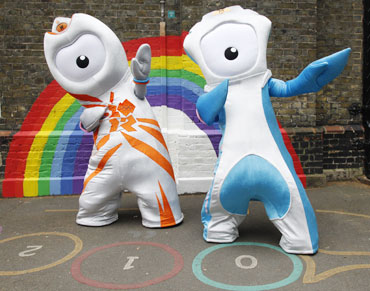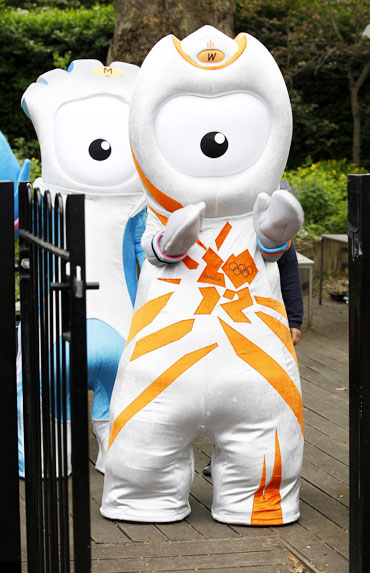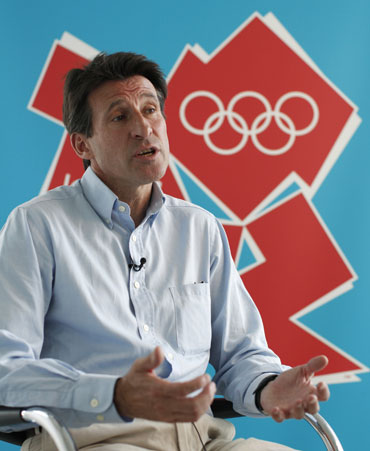
Moulded from steel left over from the last girder on the Olympic stadium, London's 2012 mascots are neither cuddly nor cute but organisers say the gleaming one-eyed metallic forms will strike a chord with children.
As the covers were removed by two pupils in front of wide-eyed classmates and LOCOG chairman Sebastian Coe at an east London school a mere javelin throw from the heart of the Games, Wenlock and Mandeville were introduced to the world.
It was the culmination of an 18-month project to come up with an enduring image for the Games and a merchandising gimmick to keep the cash tills ringing as 2012 targets 16 millions ($22.80 million) in revenue from Games memorabilia.

While modern and slightly obscure, the Games Organising Committee (LOCOG) says the mascots recognise Britain's Olympic heritage.
Wenlock is named after the village of Much Wenlock where Pierre de Coubertin visited in 1890 and his idea for a modern Olympics was born.
Mandeville is called after the Stoke Mandeville Hospital where the Paralympic movement began shortly after World War II.

Asked to describe exactly what his creations were, designer Grant Hunter of London-based firm Iris, said they were "magical beings" that would become "multi-dimensional" mascots aimed at capturing the imagination of children across the world.
A group of invited journalists were given a sneak preview of an animated film based on a story by award-winning children's author Michael Morpurgo who was commissioned by London 2012.
It showed the two steel nuggets being sculpted by the grandfather and how they spring to life in the hands of two children before morphing into various sporting poses.
The film was screened by the BBC's One Show later on Wednesday, the official launch of the mascots 2012 chiefs hope will rank favourably alongside the likes of Moscow's Misha, Barcelona's Cubist-inspired Cobi and Atlanta's unpopular Izzy.

Rather hard to describe, Wenlock and Mandeville both have one large eye, representing a camera lens so they can record what they see, cannot speak, do not smile and have features borrowed from London's iconic taxis.
"The mascot will help us engage with children which is what I believe passionately in," London organising committee chairman Sebastian Coe said as human-sized versions of the mascots danced in the school playground.
"The message we were getting was that children didn't want fluffy toys, they didn't want them to be human but they did want them rooted in an interesting story.
By linking young people to the values of sport, Wenlock and Mandeville will help inspire kids to strive to be the best they can be," he added.

After the furore over their controversial logo in 2007, a project that cost 400,000 and was initially met with scorn before proving popular, London 2012 organisers are confident that the choice of mascots will hit the spot.
The budget was just "a few thousand" according to a LOCOG official.
"These guys will tell a story about the Olympics Games and really fit with our whole philosophy of the Games," LOCOG chief executive Paul Deighton said, adding that some of the rejected designs included pigeons and Big Ben with legs sticking out.
To appeal to a generation of children brought up with electronic gizmos, Wenlock and Mandeville look as though they are related to computer game character Sonic the Hedgehog and will even have their own place on Facebook and Twitter.